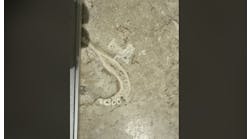Myth: If you get stuck by a dirty needle at work, you don’t need to get a blood test. If you want to get a test, you need to do that on your own time.
This is wrong on so many levels!
If you accidentally get a needlestick, if you get a cut, or if you get something in your eye, you need to seek immediate attention.
I’ve heard comments that send a chill up my spine:
- “My boss said to get the test done during my lunch hour.”
- “I was told I had to do this on my day off.”
- “I was told I had to pay for the test.”
- “I was told I had to clock out to go get a blood test.”
- “My boss said the stick isn’t that bad, so I don’t need to get a test.”
None of this is true. If you have punctured your skin and drawn blood, you need to get a blood test immediately.
Your employer is responsible for making sure you seek proper medical attention and that you do so within an hour of receiving the injury. Also, your employer is responsible for paying the related expenses and the expenses of the source patient if you know who it is.
You might also be interested in
Ouch! What to do in case of a needlestick
Wearing those ‘stupid’ utility gloves
The risk due to needlesticks
Accidental exposure to blood caused by needle injuries, cutting, biting, or splashing incidents carries the risk of infection by bloodborne viruses such as the hepatitis B virus (HBV), hepatitis C virus (HCV), and human immunodeficiency virus (HIV).
Hepatitis is inflammation of the liver. When the liver is inflamed or damaged, its function can be affected. In the US, the most common hepatitis viruses are hepatitis A, B, and C. In dentistry, hepatitis B and human papillomavirus (HBV) are most commonly transmitted. Some people with hepatitis B are sick for a few weeks (known as acute infection). But for others, the disease progresses to a serious, lifelong illness known as chronic hepatitis B. Yes, you read that right. I said “lifelong.” This is something you might never recover from. Does that make it sound serious enough?
Lower the risks from a needlestick
Your practice should have a written policy on injury prevention and percutaneous and mucocutaneous exposure that outlines the necessary steps to take when an exposure occurs. If your practice doesn’t have this written policy, be proactive and bring it up at the next team meeting, then volunteer to get this information collected.
Annual training is critical. Your team is supposed to have yearly training on Occupational Safety and Health Administration (OSHA) guidelines. This includes needle stick prevention, engineering and work practice controls, and general guidelines for workplace safety and bloodborne pathogens standards. Annual training should also outline steps to take when a needle stick occurs.
Take immediate action for needlesticks
- Stop what you are doing.
- Deglove, wash the injury with soap and water, then dry the area thoroughly.
- Report the incident to your office manager, doctor, or lead assistant. If the source patient is known, inform them of the injury. You can ask them to get tested. The patient has the right to refuse, but this needs to be noted in their chart. Assure the patient that this is covered by your practice, so there will be no out-of-pocket cost for them.
- Document the incident immediately while it’s fresh in your mind and write down the facts of the scenario. What were you doing? How did it happen? Where did it happen? You should be able to find an Incident Report Form in your OSHA binder. This step is quick and will be of great value when examining your systems and determining if you need to change your workflow.
- Go to your office’s predetermined health-care facility to get a baseline blood test, which preferably includes rapid HIV testing. Follow-up visits will be necessary, so be sure to follow the facility’s recommended follow-up protocol, which you should receive in writing. You will be responsible for these necessary steps so you need to follow up as required.
As in any workplace situation, prevention is key. By creating a needlestick prevention protocol, completing annual training, talking about work practice controls, and establishing a better workflow, you can decrease the likelihood of receiving a workplace injury. If an injury does occur, you will have the information to get the help you need.
Tija Hunter, CDA, CDIA, CDIPC, CDSH, CDSO, EFDA, MADAA, is a member and former vice president of the American Dental Assistants Association (ADAA), where she holds the honor of Master. She is the director of the Dental Careers Institute, a dental assisting and dental continuing education program, and the author of seven continuing education study courses. She is an international speaker and a certified trainer in nitrous oxide in several states. She can be reached at [email protected].





